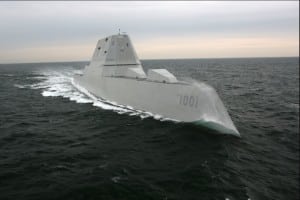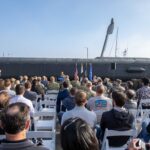
In an upcoming April exercise known as a fleet battle problem, the Navy plans to use a Zumwalt-class destroyer to command and control both manned and unmanned forces to operate long-range multidomain fires in the Pacific Ocean. The U.S. Pacific Fleet is set to host this event “exploring elements of that future force that will have the greatest impact on increasing the fleet’s lethality” in the 3rd Fleet operational area, U.S. Navy spokesman Lt. Tim Pietrack told Defense Daily on…

 By
By 











